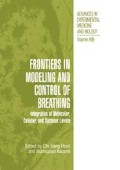Abstract
The ventilatory behavior of Lymnaea stagnalis (surfacing and opening the respiratory orifice, the pneumostome) can be operantly conditioned1. Snails placed in severely hypoxic water (< 1 ml 02 .L-1; created by gassing with nitrogen) are normally driven to increase their rate of ventilatory behavior1. However, if a noxious tactile stimulus is applied to the pneumostome at the time of ventilation, the animals can be conditioned not to breathe. They learn to self-impose hypoxia, and they remember to do so whenever they are placed in the nitrogen-gassed water. How is Lymnaea able to do so; most animals typically exhibit a hypoxic response designed to rectify oxygen limitation?
Access this chapter
Tax calculation will be finalised at checkout
Purchases are for personal use only
Preview
Unable to display preview. Download preview PDF.
References
Lukowiak, K., Ringseis, E., Spencer, G., Wildering, W., Syed, N., 1996, Operant conditioning of aerial respiratory behaviour in Lymnaea stagnalis, J. Exp. Biol. 199:683.
Powell, F.L., Milsom, W.K. and Mitchell, G.S., 1998, Time domains in the hypoxic ventilatory response, Respir. Physiol. 112:123.
Hochachka, P.W., Buck, L.T., Doll, C., and Land, S.C., 1996, Unifying theory of hypoxia tolerance: molecular metabolic defense and rescue mechanisms for surviving oxygen lack, Proc. Natl. Acad. Sci. USA 51:9493.
Bickler, P.E. and Buck, L.T., 1998, Adaptations of vertebrate neurons to hypoxia and anoxia: maintaining critical Ca 2+ concentrations, J. Exp. Biol. 201:1141.
Lukowiak, K., Adatia, N., Krygier, D., Syed, N., 2000, Operant conditioning in Lymnaea: evidence for intermediate-and long-term memory, Learning & Memory 7:140.
Okubo, S. and Mortola, J.P.Jr., 1990, Control of ventilation in adult rats hypoxic in the neonatal period, Am. J. Physiol. 259:R836.
Ling, L., Olson, E.B.Jr., Vidruk, E.H. and Mitchell, G.S., 1997, Developmental plasticity of the hypoxic ventilatory response, Respir. Physiol. 110:261.
Thomas, A.J., Austin, W., Friedman, L. and Strohl, K.P., 1992, A model of ventilatory instability in the unrestrained rat, J. Appl. Physiol. 73:1530.
Thomas, A.J., Friedman, L., MacKenzie, C.N. and Strohl, K.P., 1995, Modification of conditioned apneas in rats: Evidence for cortical involvement, J. Appl. Physiol. 78:1215.
Author information
Authors and Affiliations
Editor information
Editors and Affiliations
Rights and permissions
Copyright information
© 2001 Springer Science+Business Media New York
About this chapter
Cite this chapter
Taylor, B.E., Smyth, K., Remmers, J.E., Lukowiak, K. (2001). Metabolic Consequences of Hypdxic Conditioning in Lymnaea Stagnalis. In: Poon, CS., Kazemi, H. (eds) Frontiers in Modeling and Control of Breathing. Advances in Experimental Medicine and Biology, vol 499. Springer, Boston, MA. https://doi.org/10.1007/978-1-4615-1375-9_35
Download citation
DOI: https://doi.org/10.1007/978-1-4615-1375-9_35
Publisher Name: Springer, Boston, MA
Print ISBN: 978-1-4613-5522-9
Online ISBN: 978-1-4615-1375-9
eBook Packages: Springer Book Archive

